Texts and Contexts:
Teaching Japan through Children's Literature

The Texts and Contexts: Teaching Japan through Children’s Literature online curriculum is a collection of teacher-developed, standards-based, cross-curricular K-6 lessons. The collection is designed to promote the teaching of cultural studies of Japan while developing students’ knowledge and skills in literacy and communication. Each of the six lessons features an authentic children’s literature book on an aspect of Japanese culture.
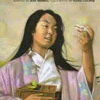
Poetry Talk features The Girl Who Loved Caterpillars (1992), a story adapted by Jean Merrill from a twelfth-century Japanese story entitled Tsutsumi Chūnagon Monogatari. In this lesson, students learn about and write tanka, an ancient Japanese poetic form. Students exchange tanka to communicate messages and participate in a poetry competition as court nobles did in the Heian period ( 794-1185 C.E.). The suggested level for this lesson is grades 3-5.
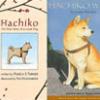
Hachinko: A Loyal Dog uses Hachiko: The True Story of a Loyal Dog (2004) by Pamela S. Turner for primary instruction or Hachiko Waits (2004) by Lesléa Newman for intermediate instruction. The Hachikō books are based on a true story that occurred in Tokyo in the twentieth century. In this lesson, students learn about a Tokyo commuter station and Japanese conceptions of loyalty and community. Students define loyalty through creative art and writing projects.
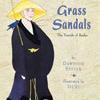
Grass Sandals: A Mini-Unit on Haiku and Brush Painting features Grass Sandals: The Travels of Basho (1997) by Dawnine Spivak. This story introduces Matsuo Bashō, the famous seventeenth-century traveling poet and provides highlights of several of his journeys. Part 1 of this lesson uses an inquiry-based approach: students analyze haiku to develop rules for writing a poem on their own. In Part 2, students learn about kanji characters and brush painting and, in a final art project, incorporate their haiku into a black-ink illustrated hanging scroll. The lesson was written for the early elementary grades but is easily adaptable for older students.
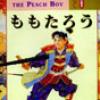
Comparing Japanese Folktales with American Tall Tales suggests using The Adventures of Momotaro, the Peach Boy (1993) by Ralph F. McCarthy to have students compare the folktale well known since the eighteenth century, with the American tall tale, Paul Bunyan. As a class, students analyze the stories and develop criteria for the two literary genres. Individually, students write the story of Paul Bunyan as a Japanese folktale or write the story of Momotarō as an American tall tale. This lesson is intended for use in grades 3-6 but can be adapted for use in primary grades.
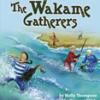
Two Homes: Living in Two Cultures focuses on the experiences and perspectives of the bicultural child who is the main character of The Wakame Gatherers (2007) by Holly Thompson. The Wakame Gatherers depicts real-life scenes, experiences, and people who live in the Koshigoe district of Kamakura-city. In the lesson, students construct categories and make cross-cultural comparisons in regard to food and meals, transportation, and homes in Japan. Making text-to-self connections, students develop understandings and definitions of the concepts of culture and bicultural. This lesson is written for the early elementary grades but is easily adaptable for older students.
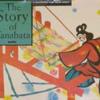
Telephone Tanabata features the kamishibai (Japanese storytelling cards) format of The Story of Tanabata (Tanabata Monogatari, n.d.) adapted by Shin Kitada. Based on an East Asian story that explains the position of the stars of Altair and Vega, Tanabata (Qixi in Chinese or Chilseok in Korean) is a festival celebrated on the seventh day of the seventh month in China, Korea, and Japan. In this lesson, students develop the concept of cultural borrowing by analyzing versions of the Tanabata story from these three East Asian cultures and writing their own adapted version in kamishibai format. This lesson is planned for use with a third- or fourth-grade class.
Each lesson contains the following components:
- Objectives
- Alignment with National Standards for Reading and Writing, Civics, Geography, History, and/or Visual Arts
- Assessment rubrics or checklists
- Background notes for the teacher
- Materials (essential handouts and visual aids in printable pdfs; PowerPoint shows with original photography and video viewable on the website)
- Step-by-step directions for implementation
- Extensions and cross-curricular ideas to add differentiation
- Resources and references
- Printable pdfs of the lesson
From 2006 to 2008, the Program for Teaching East Asia (TEA) at the University of Colorado at Boulder sponsored a project that took 41 Colorado elementary teachers on study tours to Japan and engaged in them in curriculum development focused on using authentic literature to teach about Japan. Through this program funded by the Freeman Foundation, these teachers developed their content knowledge and experiential understanding of Japan, allowing them to assess quality and reliable literature and participate in collaborative development of literature-based authentic instruction about Japanese people, culture, history, and geography. Following a process of revision and field-testing, these efforts resulted in this collection of lesson plans. We would like to acknowledge and recognize the teachers, TEA staff, and many colleagues in Japan who contributed to the project. It is our sincere hope that these lessons help enhance literature-based cross-curricular instruction and build students’ understandings of Japan.
Catherine Higbee Ishida
Project Director and Chief Editor
Program for Teaching East Asia, University of Colorado at Boulder
Editors and Reviewers
- Dr. David Henry, University of Alaska Fairbanks
- Holly Thompson, author, The Wakame Gatherers
- Catherine Ishida, Jessica Rodd, Laurel Singleton, and Pat Ziemkowski, TEA Staff
Authors and Field-testers
- Wendy Blasingame and Mandy Lover, Summit School District
- Blanca Carbajal-Rodriguez and Axel Reitzig, St. Vrain Valley School District
- Michael Carlson and Gail Stine, Englewood Schools
- Christine Cervera and Carridy Koski, Adams 12 Five Star Schools
- Fran Cohen and Nina Marks, Cherry Creek Schools
- Michelle Degitis and Casey McMorrow, Aurora Public Schools
- Gina Dupre and Leah Ebel, Falcon School District 49
- Jill Fenn and Kelly Himeisen, Poudre School District
- Noel Gannett, Roaring Fork School District
- Brenda Gates, Rebecca Laverdure, Stacey Mandel, Jill Maxwell, Katie Peterson, Katherine White, Lynn Williams, and Mike Wojczuk, Boulder Valley School District
- Gayle Green, Dawson School
- Sue Grieshaber and Linda Katzenmeyer, Academy School District Twenty
- Catherine Ishida and Jessica Rodd, TEA Staff
- Kathy Keidel, Buena Vista School District R-31
- Karen Munch, Pueblo City Schools
*All participating teachers represent Colorado school districts.
Web Design
- Jen Spolnik
The Program for Teaching East Asia at the University of Colorado gratefully acknowledges the support of the Freeman Foundation and Japan Foundation Center for Global Partnership in the development of Texts and Contexts: Teaching Japan Through Children's Literature.
Created 2010 Program for Teaching East Asia, University of Colorado.


